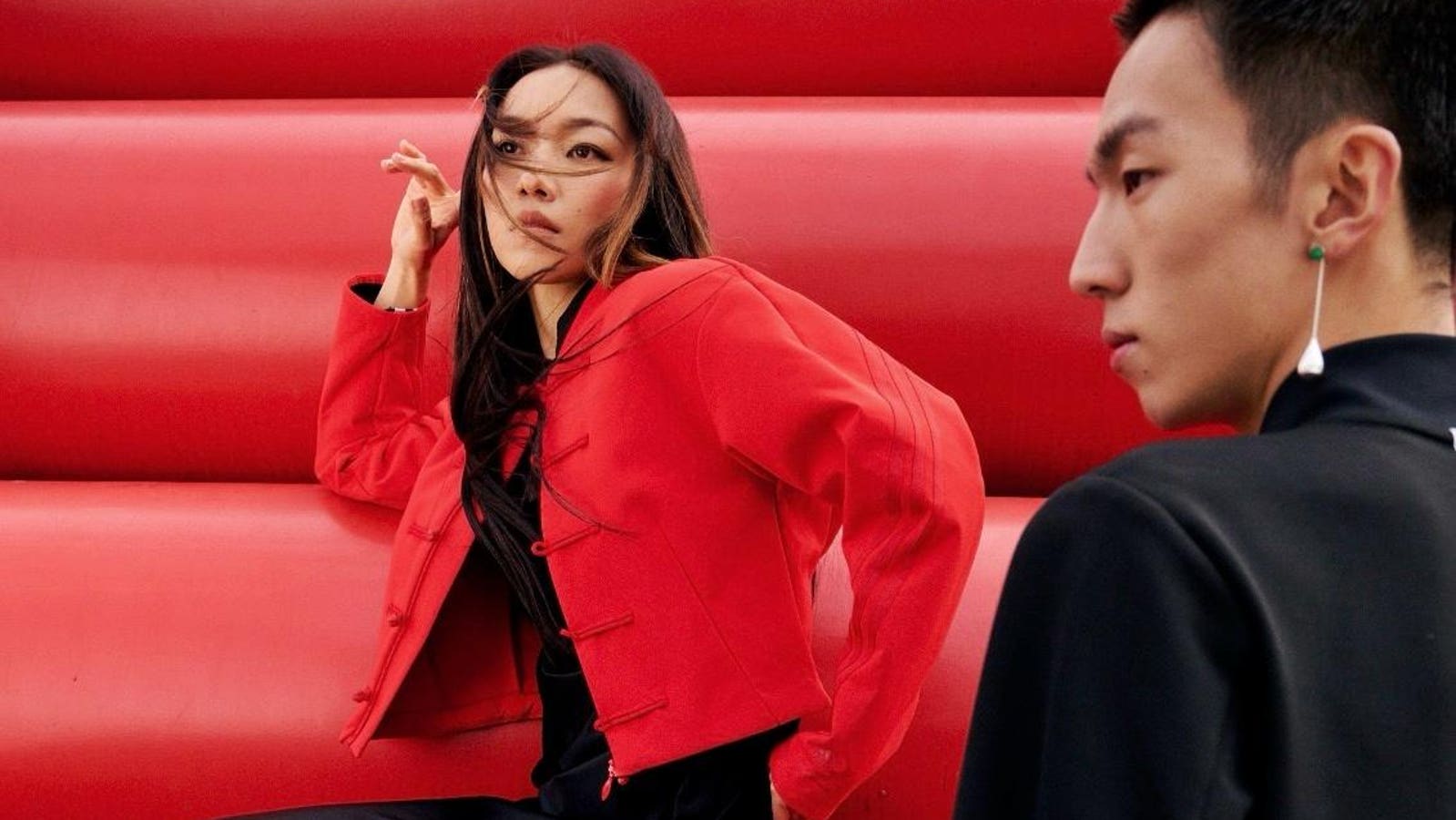
China’s consumers love rare and special editions. Nowhere is this more apparent than the celebrations for Lunar New Year. While some product categories see a dip in sales during the celebration, it is still considered the prime time for launches of themed collections to capitalize on gifting. But going into the Year Of The Dragon, it is striking how much of 2024’s selection of campaigns, collections and collabs are choosing to play it safe—if not perhaps surprising, given many brands’ recent missteps (see Burberry’s “weird” campaign). International brands are instead drawing on proven tactics, while banking on the mythical animal which promises luck, prosperity and wisdom.
Louis Vuitton
With Pharrell Williams at the helm, more is more in Louis Vuitton’s current playbook. This year, the house doubles down on leveraging the latest installation mega trend that relies on the ‘daka’ 打卡 snapshot craze to fuel online attention to offline activations. This is precisely what the brand did with a series of gilded dragon installations at stores across key Chinese cities. “The recipe is simple: create a large, dazzling display that will draw in young crowds and influencers looking for interesting photo opportunities. Then watch the views climb on social media,” Tom Nixon, co-founder of digital marketing agency Qumin, explains in an interview.
In lesser hands this strategy could have been much too much, but the luxury house manages to make even giant gold dragons seem classy. There are nice touches beyond the bombast: at Chengdu Taikoo Li, for instance, where the sculptures seem to emerge from out of the ground, while Daci Temple adds a sense of historical fantasy.
The Louis Vuitton Maison Chengdu Taikoo Li presents a special installation to celebrate the arrival … [+]
Courtesy Louis Vuitton
Bottega Veneta
Unlike the tongue-in-cheek short video offering from Nike (tapping China’s dance boom) Bottega Veneta marked the season with a more traditional—and far safer— short film campaign by creative director Matthieu Blazy in collaboration with director Jess Jing Jou. Featuring actress Shu Qi, who was appointed Brand Ambassador last October, the film showed off the Shanghai skyline alongside the collection of printed trench coats, signature woven bags in bright color-blocks (one with a dragontail) and Orbit sneakers.
According to Nixon, from an advertising perspective, the house has once again (this is the team’s fourth outing) recognised the true zeitgeist of this festive period in the sensitive portrayal of friends, families and couples. “It taps into the raw, understated reality behind Chinese New Year today and highlights pure moments of togetherness, hope and inner freedom,” he continues.
Samuel GuÌ Yang x Adidas
The “New Chinese Style” is certainly proving to be a bankable trend. This year, sportswear brand Adidas is tapping such cultural confidence with a capsule from designer Samuel GuÌ Yang (a Dragon himself). What’s resulted is a 10 SKU mini-collection that blends Yang’s traditional Chinese aesthetic codes with sportswear made from 100% recycled fabric and deadstock. In a call from Shanghai, Yang says he was eager to design pieces that “weren’t typical. Even though it is a sportswear collaboration, we didn’t approach it like that.”
The unlikely crossover is proof that taking risks can pay off. Lu Bai, founder of marketing agency B-Mint, states in an interview: “It shows a deep respect for cultural heritage while also appealing to contemporary fashion sensibilities. Plus, the use of color, fabric, and design resonates with the symbolism of the period.” Inspired by the ‘dragon dance’ seen during festivals, the fresh collaboration understands Chinese culture as something dynamic and modern via Shanghai’s voguing dance scene. “The importance of respecting and authentically representing cultural elements in such collaborations cannot be overstated,” Bai adds.
Inspired by the ‘dragon dance’ seen during festivals, the fresh collaboration pays homages to … [+]
Courtesy Samuel GuÌ Yang
Lancôme
Cosmetics giant Lancôme commissioned contemporary Chinese artist Jacky Tsai to build an ice sculpture at the Harbin ice festival while launching a Year of the Dragon gift box also designed by Tsai. Foregrounding Lancôme’s signature “Little Black Bottle,” it takes the shape of the Arc de Triomphe. The sculpture has been quite the hit on Xiaohongshu, and the themed gift box has seen strong sales thus far, Jacob Cook, CEO of e-commerce consultancy WPIC, outlines. Here’s why he thinks it works: “It includes online and offline engagement, combines local cultural elements with the essence of the brand, and makes the most from the latest consumer frenzy in the Harbin ice festival.”
It has perhaps helped that, with pandemic restrictions lifted, the annual Harbin ice festival has been popular this year. “The festival has drawn millions of visitors and over USD $1 billion in revenue since opening on January 5. Hotels in the city are booked through, “ Cook explains. A lesson for brands on creating a diagonal approach, one that can capitalise on the multidimensionality of Lunar New Year.
